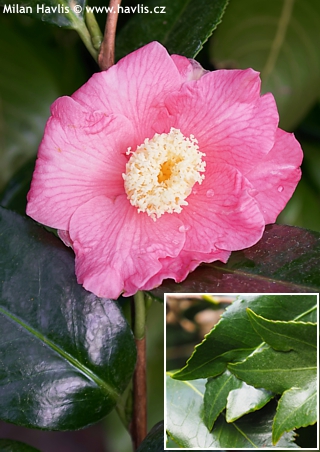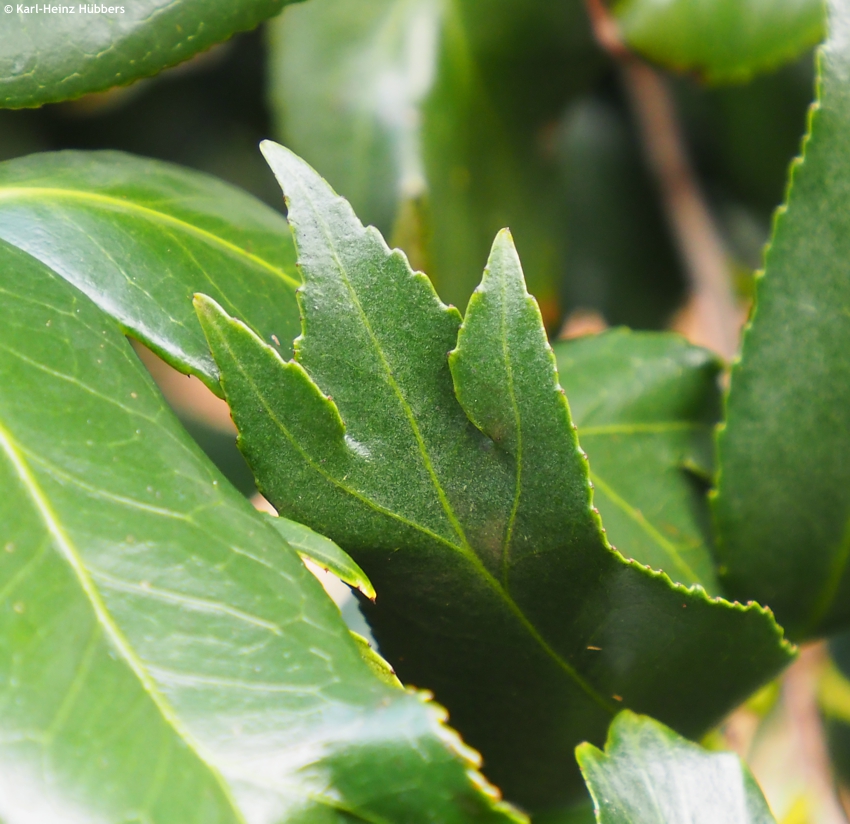Camellia japonica 'KINGYO-TSUBAKI' hardy camellia


Camellia
History of breeding@schovat@
Dreams usually come true when you no longer accept when others say that this or that is impossible. It is often connected with the fact that no one has tried it before, or tried hard and long enough. In the horticultural world this is exactly what pushes the boundaries, especially when it comes to hardiness. For example until recently it was believed that none of the subtropical species would have had a chance to make it through the continental winters. Such as silk tree. And now? Many gardeners enjoy its immense beauty in their gardens surviving -25°C without a minor damage. Exactly the same applies to evergreen magnolia where possibly at the same time there were breeders selecting their hardy varieties. Elsewhere there were a few camellia enthusiasts working on the identical issue.
Camellias would probably have remained the feature of southern countries had not come the harsh winters of the 1970's and 1980's. In the USA many of them were killed during some of these winters, and they were not all grown at the borderline of their hardiness. Two botanists who witnessed this fiasco decided to breed hybrids and varieties that would withstand harder frost not only in their former environment but also in countries up north. Dr. Clifford R. Parks of the North Carolina University spent his time on breeding mostly spring flowering camellias (japonica species and hybrids), and he is famous for the April series. The other visionary was dr. William Ackerman (†2013), a retired USDA botanist from Ashton. Ackerman recognized his calling when in spring 1978 only 15 plants survived out of originally cultivated 956 specimens and he changed his of from breeding only fragrant camellias to hardy camellias. He mostly focused on autumn flowering hybrids and sasangua species and his famous series are Winter and Ashton.
Even though parentage of many plants which are most probably hybrids is untraceable today we stick to accepted names be it c.japonica or c.sasangua. Interesting fact is that camellia was named after a Czech (Moravian) botanist George Joseph Kamel (†1706), a missionary in the Phillipines in late 1600's whose work was so contributive that Carl Linnaeus decided to name camellia in his honour several decades after his death. So Kamel had no chance to see the plant as it was first brought to Europe in 1739 and was not present in the flora of Phillipines.
@schovatK@
Description of varieties
Cultivation
Camellias need similar planting like rhododendrons - once you plant them well you need not care for them. They require fresh, ericaceous (acid), peat-based, humus-rich soil that will never dry out but will not be water-retaining like clay. Even moisture and good drainage are key demands for good root growth. We strongly suggest using mycorrhizal fungi when planting. Never plant it too deep and if your soil is clay elevate the root ball accordingly. Fertilizing is recommended after flowering, once a month until late summer.
Crucial is finding a good location, and finding one for good - camellias detest transplanting. In the wild they grow under canopies of tall trees or at woodland margins. They dislike direct sunlight and both excess heat in summer and drying winds in colder months. Find a place at the back of the house away from winter and spring sunlight, sheltered from the north-west, or behind a tall hedge with some trees nearby to cast at least dappled shade during summer. Ever seen a camellia in full sun at the seaside? Remember that the air is so humid there that plants do not suffer from drying rays as they keep on drinking all day long. Before it establishes which might take 2-3 years provide enough moisture also in winter if the ground is not frozen but don't overwater! Mulch it well with bark mulch 5-10 cm high. Reliably hardy to -17 °C (USDA zone 7) and according to amateur enthusiasts it has withstood down to -21 °C (under trials here).
Last update 03-02-2021
Goods are shipped all over Europe. For Russia and U.K. and for further details please read about SHIPPING OPTIONS HERE.
Are you interested in a serious discount for orders NOV-FEB? Check your options here.
THE PRICES INCLUDE VAT of 15%. For quick conversion you can use 1 CZK = approx. 0.04 EUR
- STANDARD QUALITY - Plants of this group are 1st class quality with number of branches and overall density adequate to their size and age, considering they were container grown.
- DE LUXE QUALITY - This label guarantees a luxurious quality of manually selected plants that, compared to their height and age, are exceptionally dense and beautiful.
- EXTRA - These plants are usually mature and bigger specimens with exceptional overall appearance.
- STANDARD (as described in the plant form) means a tree with a trunk of 190-210 cm and a crown at the top, unless specified differently. The commercial size for trees is their girth measured in the height of 1m from ground.
- HOBBY - These plants are of the same quality as our standard-quality plants but younger and therefore cheaper.
- SHRUB - a woody plant with branches growing bushy from the ground level.
- HALF-STANDARD or MINI-STANDARD - a small tree with shorter trunk, its size is usually specified.
- FEATHERED - These are trees with branches growing already from the base of the trunk and up along the stem.
- GRASSES and PERENNIALS - Sizes given usually read the diameter of the pot or the clump, as specified.
















